“Today, I have brought you a modest gift – the tunnel. This tunnel now serves as a passage for vehicles across the floor of the Daijja (known as Samudra or ‘Daria’ in the local dialect of Chattogram region)”
Prime Minister Sheikh Hasina
Bangladesh has entered the age of tunnels. Prime Minister Sheikh Hasina today (October 28, 2023) inaugurated the Bangabandhu Sheikh Mujibur Rahman Tunnel under the Karnaphuli River in Chattogram and became the first person to cross the tunnel in 3 minutes by tolling.
You can also read: Padma Bridge Rail Link: Connecting Southwestern Bangladesh
This tunnel is the first under-river tunnel in South Asia. It connects Patenga in Chattogram city to Anwara upazila through the Karnaphuli riverbed. As a result, new doors of industry are opening around the sea coast in South Chattogramand Cox’s Bazar.
The ‘Bangabandhu Sheikh Mujibur Rahman Tunnel’ connected Chattogram, the commercial city of the country, like ‘One City to Town’ in the model of Shanghai, China.
Bangabandhu Sheikh Mujibur Rahman Tunnel Design
The Bangabandhu Sheikh Mujibur Rahman Tunnel, also known as the Karnaphuli Tunnel, is a 3.4 km long, twin underwater road tunnel located in Chattogram, Bangladesh. It holds the distinction of being the very first under-river road tunnel in South Asia. The tunnel boasts an internal diameter of 10.6 meters and maintains a minimal clearance of 31 meters to the Karnaphuli Riverbed. The project involved the construction of two tubes, each 35 feet wide and 16 feet high, within an 11-meter gap to facilitate the easy passage of heavy vehicles.
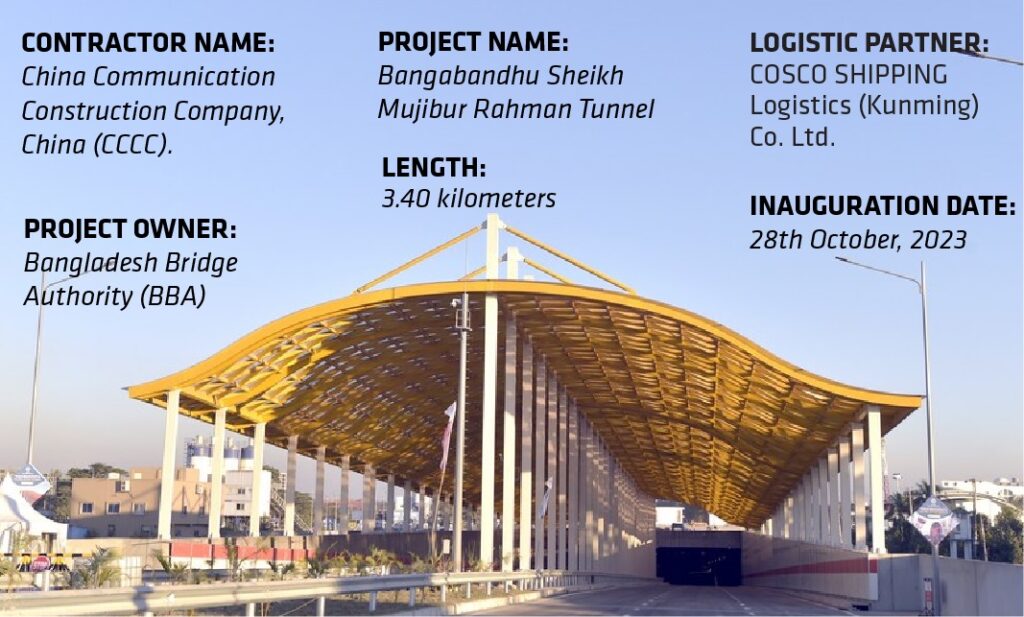
This tunnel, measuring 3.40 kilometers in length, is accompanied by an approach road spanning 5.35 kilometers and a 727-meter bridge that connects the main city, port, and the western side of the river with its eastern counterpart. As outlined in project specifications, this tunnel is set to transform Chattogram into “one city with two towns” as it extends beneath the Karnaphuli River, directly linking the Chattogram Port with Anwara Upazila, which, in turn, connects Cox’s Bazar with Chattogram. Furthermore, the tunnel will establish a direct link between the proposed Asian Highway and the Dhaka-Chattogram-Cox’s Bazar Highway, effectively reducing the distance by 40 kilometers. Vehicles within the tunnel are expected to travel at a speed of 80 kilometers per hour.
This tunnel forms a crucial part of China’s ‘One Belt, One Road’ initiative, serving as a pivotal link in cross-country transport corridors. The China Communications Construction company is responsible for building both the tunnel and the associated infrastructure, including the approach roads. The work for the first tunnel tube was inaugurated by Prime Minister Sheikh Hasina, the daughter of Bangabandhu, on February 24, 2019. Prime Minister Hasina and Chinese President Xi Jinping jointly laid the foundation stone of the Bangabandhu Tunnel on October 14, 2016. The China Communications Construction Company Ltd is the contractor responsible for the project.
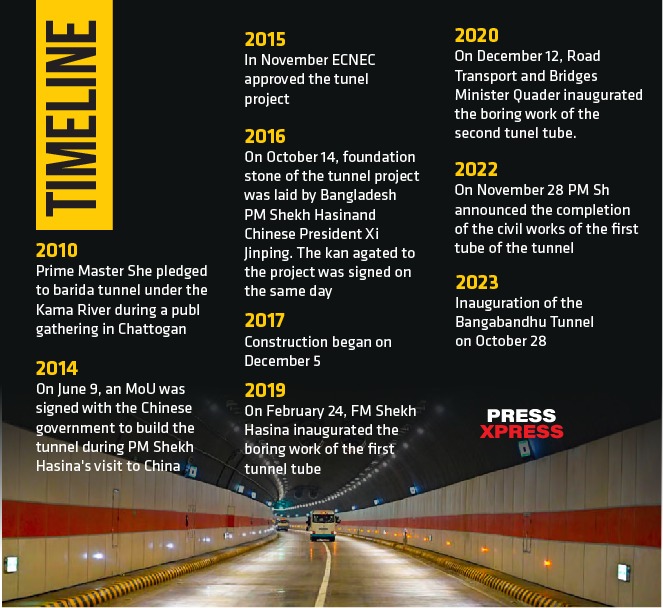
Bangabandhu Sheikh Mujibur Rahman Tunnel Construction Cost
The initial project cost estimate was Tk8,446 crores, and it was scheduled for completion by November 2020. However, by November 2018, the cost had risen to Tk10,374 crore. On January 17 of this year, the project’s total cost skyrocketed to Tk10,689 crore 71 thousand 33, marking a significant increase of Tk315 crore 28 lakh 93 thousand compared to the original projection.
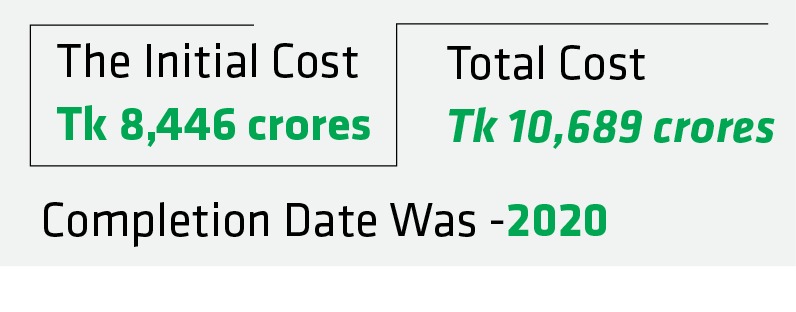
The project’s funding includes a contribution of Tk4,699 crore 70 lakh 66 thousand from the Bangladesh government, with China Exim Bank financing Tk5,913 crore.
Back on November 26, 2022, Prime Minister Sheikh Hasina inaugurated the first tube of the Bangabandhu Tunnel, aiming for full tunnel operation by February of this year. Once operational, the tunnel will establish a direct connection between Chattogram and South Chattogram, essentially transforming Chattogram into a ‘one city two towns’ model similar to Shanghai, China.
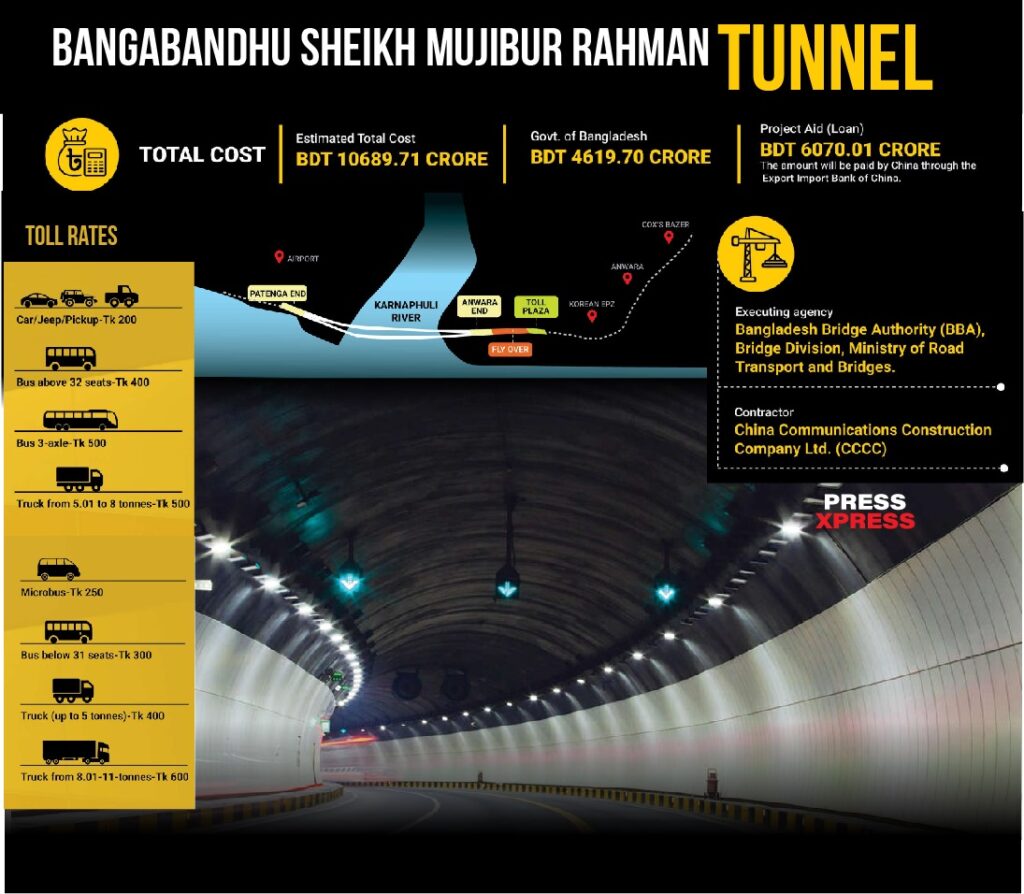
Karnaphuli Tunnel: A Potential Harbinger of Growth
The Bangabandhu Tunnel, a game-changing infrastructure project in Bangladesh, is set to revolutionize the region’s economic landscape and connectivity. Initially designed for around 17,206 vehicles annually, the tunnel’s capacity is expected to skyrocket to 28,000 vehicles per day by 2028, eventually reaching 38,000 by 2030. This tunnel will serve as a crucial link connecting different parts of the country to Cox’s Bazar via the Dhaka-Chattogram highway, fostering trade and economic activities.
The impact of the tunnel goes beyond improved connectivity. It is poised to drive the expansion of Chattogram, a vital trade hub, promoting prosperity in business and industry. Furthermore, Anwara Upazila, located at the northern end of the tunnel, is on the path to becoming a thriving suburban area. With established entities like the Karnaphuli Fertilizer Company (KAFCO), Chattogram Urea Fertilizer Limited (CUFL), Korean EPZ (KPZ), and the Marine Academy, the region holds substantial growth potential.
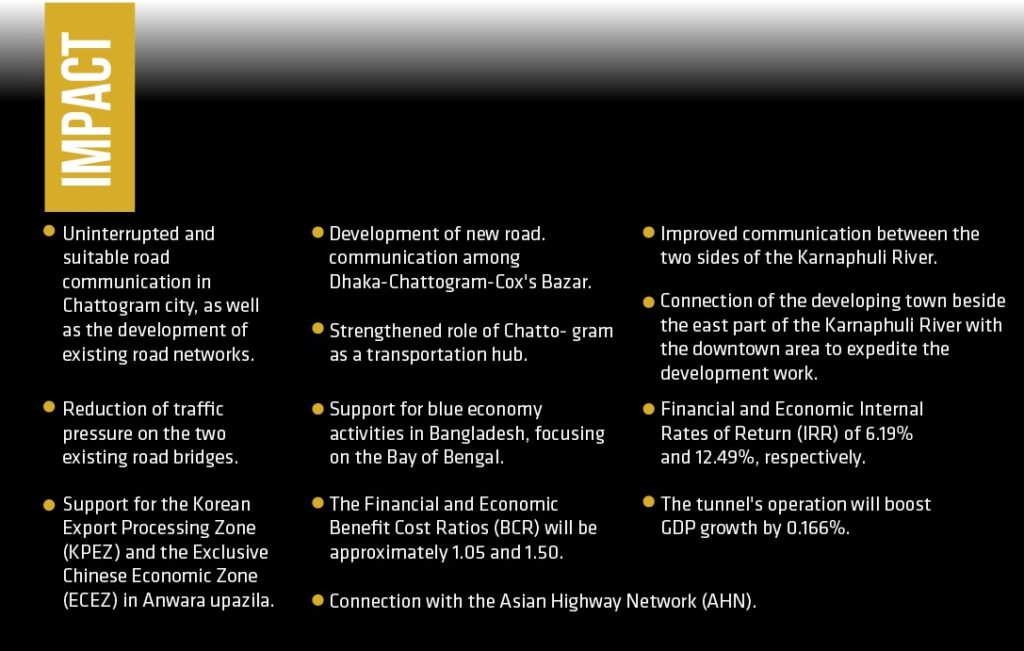
Moreover, the development of the China Economic Zone anticipates the creation of 171 industries and over 100,000 jobs, adding to the economic momentum. The tunnel’s construction will also reduce the distance between Chattogramand Cox’s Bazar by more than 15 kilometers, contributing to regional development.
The economic landscape of Anwara Upazila has been significantly transformed by government mega-projects, reshaping the communication network in the region. Consequently, Anwara Upazila is set to become a pivotal hub for international communication, attracting economic and commercial activities.
This transformative environment has triggered a competition among industry and business groups to invest in the area, causing land prices to surge tenfold within two years. Commercial banks are also recognizing the potential, leading to the establishment of new branches and significant investments. This dynamic setting holds the promise of substantial economic growth and development.
The improvement of infrastructure, including the expansion of roads from Kalabibi Dighi to Chatri Chaumuhani, has spurred the construction of commercial and residential buildings, the development of various amenities, and the emergence of significant industrial projects, including a substantial garment factory expected to employ thousands.


